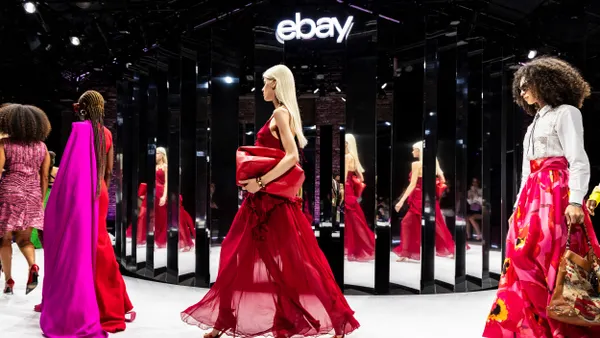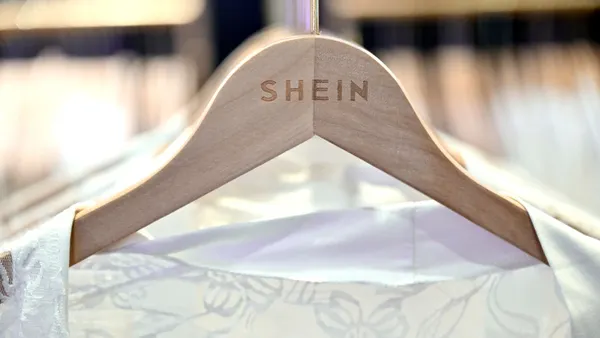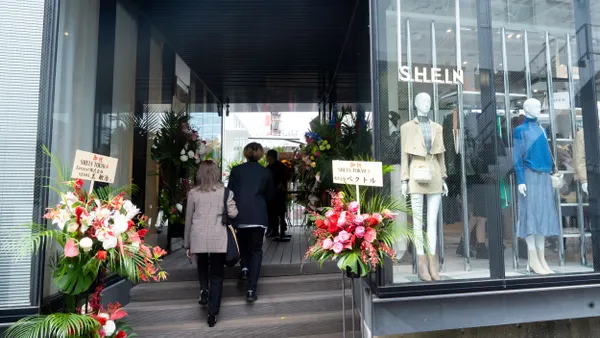Dive Brief:
- Fashion Revolution released its eighth annual Fashion Transparency Index earlier this month, which found that fashion brands haven’t made much progress on increasing transparency in their supply chains and global impacts from the previous year.
- While two brands, OVS and Gucci, ranked above 80% on their transparency practices for the first time in the index’s history, the average transparency score among the world’s largest fashion brands is two percentage points higher than last year.
- The report gathered data on 250 of the world’s largest fashion brands and retailers, and ranked them based on what information they chose to disclose regarding their social and environmental policies, practices and impacts, and operations and supply chains.
Dive Insight:
The Index gives these brands points based on their level of transparency and how much they disclose of their policies and commitments, governance, supply chain traceability, gender and racial equality and other standards. Brands are scored between 0-100% for their transparency, and while the Index stated that no brand in its report scores 100%, it stated, "in theory, a score of 100% would mean that a brand is publicly disclosing details of every supplier in their supply chain and every policy, procedure, performance and impact reviewed in the Index across a broad range of human rights, environmental and governance issues.”
Seventy of the brands it ranked score between 0 to 10% for transparency.
“This report should not exist,” the report’s introduction reads. “We have been publishing this Index since 2017 and yet, the majority of the global fashion industry is not transparent. The lack of progress in the face of an accelerating climate crisis, deepening social inequality, environmental destruction and various incoming legislations attempting to regulate the fashion industry is concerning.”
Some high scoring brands included the Australian Target and Australian Kmart, with 76%. Meanwhile, H&M scored 71%, and VF Corporation-owned brands North Face, Timberland and Vans scored 66%, 66% and 65% respectively.
Among the lowest scoring brands, with a 0 to 1% ranking, were Fashion Nova, Tom Ford and Savage X Fenty.
Gucci led the way on its transparency score for the luxury sector — boosting its rating 21% over last year — and the report noted an overall increase in transparency among luxury brands. More high end brands are disclosing their factory lists, per the report, and five luxury brands saw double-digit increases in their scores compared to last year. Armani raised its score 19%, and Jil Sander, Miu Miu, and Prada all boosted their scores 17%.
Some luxury brands have also begun disclosing their raw material suppliers,which has been common in other market segments including high street and sportswear, per the report.
For traceability, 52% of fashion brands disclosed their first tier supplier list, meaning the direct suppliers of their final product. Yet 45% of the brands ranked within 0 to 1%, and said little to nothing about their suppliers.
The findings also cover waste and overproduction, showing that 88% of the brands didn’t disclose their annual production volumes, and 99% didn’t disclose a commitment to reduce the number of new items they produce.
Among climate concerns, the Index ranked brands on its commitment to deforestation efforts, with 12% of brands publishing a time-bound commitment to these efforts and 7% of these publishing measurable progress toward achieving zero deforestation.
On materials sourcing, the report found that 51% of brands publish their targets on sustainable materials, but only 44% define what that means.
The report found that 1% of the brands disclose the number of workers in their supply chains are being paid a living wage. Garment workers in Bangladesh are in the midst of requesting a minimum wage increase from the Bangladesh government.
Fashion Revolution is an organization formed in the wake of the Rana Plaza disaster in 2013. It focuses on activism directed at brands and policy makers, and its work centers on education and advocacy.











